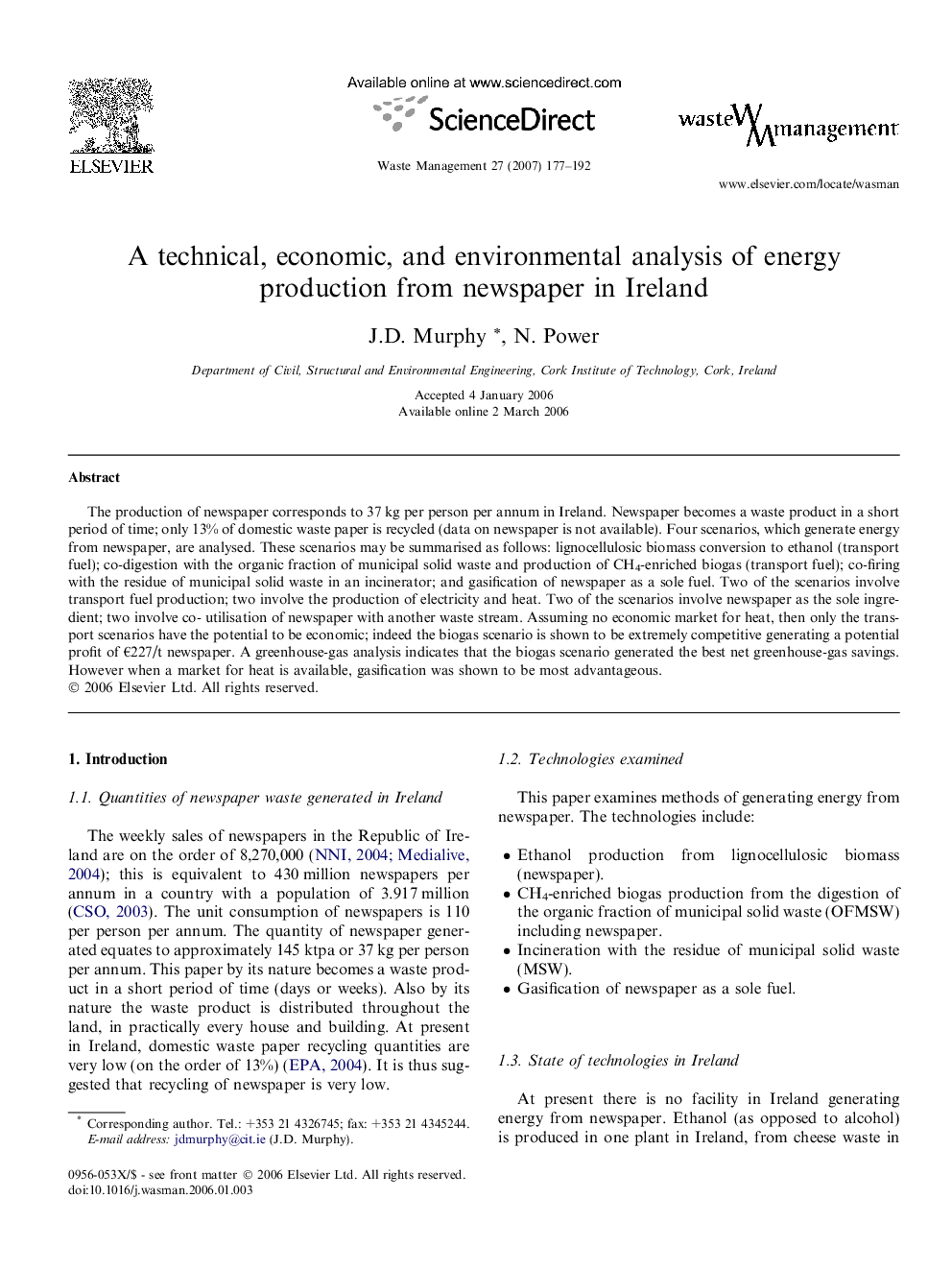| Article ID | Journal | Published Year | Pages | File Type |
|---|---|---|---|---|
| 4474262 | Waste Management | 2007 | 16 Pages |
The production of newspaper corresponds to 37 kg per person per annum in Ireland. Newspaper becomes a waste product in a short period of time; only 13% of domestic waste paper is recycled (data on newspaper is not available). Four scenarios, which generate energy from newspaper, are analysed. These scenarios may be summarised as follows: lignocellulosic biomass conversion to ethanol (transport fuel); co-digestion with the organic fraction of municipal solid waste and production of CH4-enriched biogas (transport fuel); co-firing with the residue of municipal solid waste in an incinerator; and gasification of newspaper as a sole fuel. Two of the scenarios involve transport fuel production; two involve the production of electricity and heat. Two of the scenarios involve newspaper as the sole ingredient; two involve co- utilisation of newspaper with another waste stream. Assuming no economic market for heat, then only the transport scenarios have the potential to be economic; indeed the biogas scenario is shown to be extremely competitive generating a potential profit of €227/t newspaper. A greenhouse-gas analysis indicates that the biogas scenario generated the best net greenhouse-gas savings. However when a market for heat is available, gasification was shown to be most advantageous.
